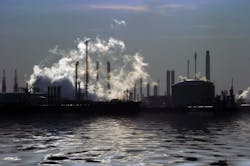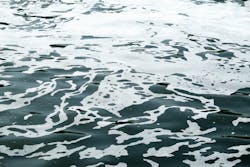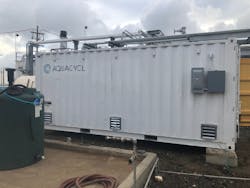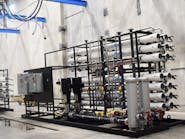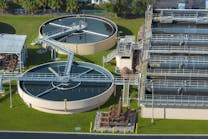Water reduction has been a central strategy for most industrial companies’ water stewardship goals and commitments. Companies increasingly view water as a key part of their environment, sustainability and governance (ESG) goals, with more than 200 multinational companies signing on to the CEO Water Mandate, a UN Global Compact initiative that mobilizes business leaders on water, sanitation and the Sustainable Development Goals.
All major food and beverage companies recognize the importance of water in their operations and have taken steps to reduce their water use ratio (water used per product produced). Water reduction makes good business sense by reducing operational risks and costs and benefiting the local communities.
Direct reduction of water in a company’s operations is something that a company can control, and over the past 15 years, water use ratios have declined by 40% to 50% in many consumer packaged goods (CPG) companies. The reductions can come from various sources, including process or equipment changes, water reuse and recycling, improved training and more.
Water reduction is always a good strategy, but it can have unintended consequences for industrial companies and their downstream treatment facilities and communities. There have been studies conducted showing the impact of household water conservation on utilities, but few have looked at the impact of industrial water reduction.
Increasing concentration of contaminants
The most obvious unintended consequence is that as water use decreases, the volume of effluent correspondingly decreases, and the concentration of pollutants increases. Less water used for the same amount of product produced will still contain the same amount of contaminants (e.g., organic carbon, salts and suspended solids), but the concentration increases, making it more challenging for treatment systems to remove them. This is true whether the effluent is discharged to a sewer or to an on-site treatment system. Centralized systems are typically designed for residential sewage treatment, which has lower contaminant concentrations than most industrial flows. Treating industrial streams becomes even more challenging as outflow concentrations increase.
For CPG companies, increased concentration can result in high surcharges, permit exceedances and ultimately in the utility limiting permitted discharge. For companies that have existing on-site treatment, higher concentrations can create shocks to the system, which ultimately is a production risk.
Depending on the content of the wastewater, different pretreatment technologies can be put in place to remove the contaminants. The most common components present in industrial wastewater are:
- Biological oxygen demand (BOD), a measure of organic carbon.
- Total dissolved solids (TDS), typically salts.
- Total suspended solids (TSS), any undissolved particles.
- Nutrients (e.g., phosphorous, nitrogen).
- Fats, oils and grease (FOG).
- Cleaning solvents and lubricants from machinery.
Removing contaminants with industrial pretreatment
For high levels of TDS, the best removal technologies are membrane-based, including reverse osmosis (RO). Depending on the level of desired removal, companies can have multiple stages of filtration, and there will ultimately be a brine that needs to be disposed of. Some companies are investing in zero liquid discharge, which converts the dissolved solids into salt, but this is energy-intensive and often cost-prohibitive.
For high levels of natural nutrients, such as nitrogen and phosphorous, there is a variety of pretreatment options. One opportunity that many companies are looking at is to capture and repurpose the nutrients as fertilizer.
With high-concentration BOD and TSS, companies have fewer options for recovery or upcycling. Disposal options include trucking high concentrates off-site for land application or to an accepting utility, which has an environmental consequence of increased greenhouse gases (GHG) from trucking and energy consumption for treatment. A second option is to trickle feed it to the utility, meaning dilution of the higher-strength stream, but this runs counter to the progress made on reducing water usage. A new alternative is to use an industrial pretreatment system like Aquacycl’s BioElectrochemical Treatment Technology (BETT) that handles low-volume, high concentrate streams to remove the majority of BOD and TSS. By using industrial pretreatment to remove up to 95% of BOD and 85% of TSS, companies can direct discharge to sewer without permit or surcharge risk, or further purify for reuse applications on-site.
While industrial on-site treatment and reuse addresses many water-related challenges, it comes with its own set of unintended consequences. At a recent panel discussion on Meeting Water Related ESG Goals in the Beverage Industry1 — which was hosted by Aquacycl — Michael Alexander, global head of water, environment, agriculture, sustainability at Diageo, remarked that companies need to “make sure you're looking at [water efficiency] holistically; they might get the very best water efficiency, but it's detrimental to their carbon efficiency.”
Increasing costs of treatment
While counterintuitive, another unintended consequence of water reduction is increased costs to discharge wastewater. As concentrations increase, surcharges from the utility or trucking wastewater will increase costs. Conversely, if a company invests in on-site treatment, it could eliminate surcharges that the local utility depends upon, leading to higher rates for all rate payers. This is especially true in municipalities that have adapted operations to accommodate large industrial users. The utility will still need to deliver its services and maintain infrastructure, and a revenue shortfall can result in broadly applied rate increases. An example of this from the residential side is when California consumers reduced water consumption by over 20% to address low water supply, utilities faced tens of millions of dollars of revenue shortfall. This led to rate hikes of up to 40% to make up the shortfall.
Reducing downstream flows
On-site water reuse at the industrial level can also have the unintended consequence of reducing water availability to centralized reuse systems that are counting on the water flow for aquifer or surface water recharge. In many areas, especially developing countries, wastewater is discharged to receiving water bodies with minimal or no treatment. Lack of treatment can create toxic conditions and poison water resources. However, where the receiving watershed is anticipating MGD flows of treated water from a centralized facility, a reduction in effluent volume could have negative impacts on water resilience within the larger region. It is estimated that 10% to 15% of wastewater in the U.S. is recycled or reused, and reduced volume will challenge the utility’s ability to operate the water recycling plant.
Increased wear and tear on sewer systems
While not always applicable for industrial users, a study by Kurt Schwabe, adjunct fellow at the Public Policy Institute of Californians Water Policy Center and professor of Environmental Economics and Policy at UC Riverside, examined the impacts of residential water conservation and found various unintended consequences.2
Sewer systems were built for specific volumes, and as industries and individuals conserve water, it can affect the infrastructure. Systems that rely on gravity are challenged to push higher concentrations of solids through the pipes, resulting in odors, damage to pipes and increased stoppages. Less water flowing through the system results in more sludge accumulating, which makes the pumps work harder (pushing more solids through), ultimately resulting in more frequent cleaning and maintenance. As there is less water flowing, the system needs more flushing to reduce odors and contaminants in stagnant water.
Don’t let the challenges limit water reduction progress
Water reduction is always a good idea and should be the first step for any corporate water strategy. The benefits to the company, community and environment outweigh the risks and challenges. This article should be used to inform and plan rather than to impede further progress. While water reduction brings unanticipated challenges, there are many existing technologies available to address them.
Companies can also look to less traditional ways to deal with effluent. One suggestion from the panel discussion was to co-locate facilities from different industries. Water sharing of low-quality, poor-grade water for one use can be perfectly good water use for another. The discharge water from a food processor, while it may have higher concentrations of TDS or BOD, could be acceptable for a cement processor. Depending on local regulations and zoning, this could bring its own set of challenges, but working collaboratively with the utility and neighbors helps expand water reuse opportunities, ultimately improving watershed management as less freshwater is being withdrawn.
References
1. https://youtu.be/DCv-M1q8U4g.
2. “Is a gallon conserved a gallon save? The Unintended Consequences of Water Conservation on the Reuse of Treated Municipal Wastewater” https://sustainabilitycommunity.springernature.com/posts/is-a-gallon-conserved-a-gallon-save-the-unintended-consequences-of-water-conservation-on-the-reuse-of-treated-municipal-wastewater.
Sofia Babanova is the CTO and co-founder of Aquacycl and leads the interdisciplinary team of engineers, researchers, and service personnel conducting development and operation of biological, electrochemical and bioelectrochemical systems for wastewater treatment and purification.
